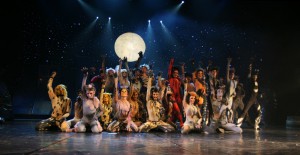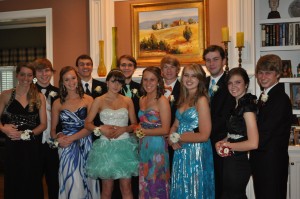
For today’s education focus, I want to take a brief look at musicals. A musical is like a stage play, only the acting is interrupted from time to time with singing – either by an individual (a solo), by a pair (a duet), or sometimes by three people (a trio) or several (a chorus). So, a musical will have not only a cast (the group of actors/actresses performing the musical), but a pit band or pit orchestra as well.
A musical is a common extracurricular high school activity. Although it represents a big commitment for the students who participate – rehearsals are usually scheduled for every day after school, or in the evening – there are benefits as well. Musicals give students a chance to try their hand at performing arts – specifically, at acting and/or singing. Additionally, most musicals also have choreographed scenes, giving at least some of the performers the opportunity to dance. Even if a student is not interested in being on stage, there are other opportunities for participation as well: a student may participate in the pit band, playing his instrument and thus helping to provide the musical accompaniment; a student who is good with his hands may choose to help design and/or build the set for the musical; some students may prefer to work with costuming and stage makeup, while others may prefer to work with the technical aspects of production, such as lighting or sound.
A musical has various acting “parts,” or roles, like a play. “Tryouts,” or auditions, are held to fill the cast by determining which students are suited for which roles. Likewise, there may be auditions for the pit band, or the band director may simply tap the top chairs in the band to be in the pit band. Other participants, such as those involved in production, set construction, or costuming, don’t have tryouts, as there is usually enough work to go around for any and all who want to contribute their labors behind the scenes.
After the cast has been selected, the actors and actresses must memorize their lines, dancers work on choreographing their scenes, those in the costume department start whatever sewing needs to be done, and the set is designed and constructed. When the performers have learned their lines, everything is ready to come together for rehearsal. As I mentioned earlier, rehearsals are held nearly every day after school or in the evening, so the cast, pit band, and production crew get plenty of opportunity to work with each other and make adjustments as necessary. These rehearsals are not in costume and tend to be less formal, but as the date of the actual performance draws near, a “dress rehearsal” or two will be scheduled. A dress rehearsal is formal and conducted in full costume and makeup, to make things as close to the actual performance as possible. This dress rehearsal gives the actors the chance to get used to performing in costume and makeup, take care of any last-minute costume changes, etc. Pictures may also be taken during a dress rehearsal, so as to have the greatest freedom in getting pictures without having to worry about disrupting an audience.
A musical generally has a number of performances, spread out over several nights; for example, performances might be Friday and Saturday nights for two or three weekends. The first performance is called “opening night,” while the last performance is “closing night.” At the end of the final performance, there is usually a “curtain call,” where all the performers and supporting crew (pit band, production crew, etc.) are recognized, typically bowing to the audience and receiving a token of appreciation, such as a bouquet of flowers, from their admirers (usually Mom and Dad!). Then the end of the musical is celebrated with a cast party, where those involved are rewarded for their hard work.
Google


